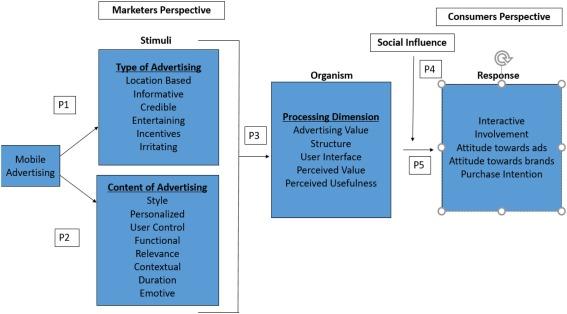Exploring the Benefits of Working with Global Distribution Networks

In the age of globalization, where a single click can connect continents, businesses are reaching beyond borders like never before. At the heart of this interconnected world lies the intricate web of global distribution networks-a powerhouse fueling the expansion of brands and the dreams of entrepreneurs. But what truly makes these networks the lifeline of modern commerce?
Imagine a world where a groundbreaking product, born in the heart of a bustling city, finds its way to a remote village thousands of miles away. The magic behind this journey doesn’t just lie in the product itself but in the robust channels that ensure its seamless transition from creator to consumer. Global distribution networks are the silent architects behind these success stories, crafting pathways that blend efficiency, reach, and adaptability.
In this exploration, we delve into the multiple benefits that come with harnessing these expansive networks. From unlocking new markets and fostering innovation to optimizing supply chains and enhancing customer satisfaction, the advantages are as boundless as the networks themselves. As we navigate this dynamic landscape, we’ll uncover how companies, both large and small, leverage these networks to not only survive but thrive in the global arena.
Join us as we unravel the complexities and opportunities entwined in global distribution networks-a journey into the very veins of global trade and commerce.
Table of Contents
- Understanding the Dynamics of Global Distribution Networks
- Enhancing Market Reach Through Strategic Partnerships
- Optimizing Supply Chain Efficiency for Competitive Advantage
- Best Practices for Navigating Cultural and Regulatory Challenges
- Q&A
- Future Outlook

Understanding the Dynamics of Global Distribution Networks
Enhancing Market Reach Through Strategic Partnerships
Optimizing Supply Chain Efficiency for Competitive Advantage
Maximizing efficiency in the supply chain is crucial for businesses aiming to maintain a competitive edge. By collaborating with global distribution networks, companies can leverage innovative logistics strategies and cutting-edge technologies. This partnership allows for real-time tracking of shipments, ensuring transparency and agility in response to market demands. Effective utilization of global resources minimizes costs and maximizes productivity, providing businesses with the ability to concentrate on core competencies and innovation. To explore these facets further, visit our collaboration insights with Global Distribution Networks.
Adopting a comprehensive strategy that prioritizes efficiency in the supply chain involves several smart practices. Companies benefit from:
- Streamlined Processes: Reducing bottlenecks through automation and AI-driven analytics.
- Sustainability Initiatives: Implementing eco-friendly measures such as green warehousing and transportation.
- Risk Management: Identifying potential disruptions and preparing mitigative actions.
For detailed strategies, visit Supply Chain Efficiency Techniques to transform supply chain management.
Here’s a brief comparison of traditional versus optimized supply chains:
| Aspect | Traditional | Optimized |
|---|---|---|
| Cost Control | Reactive | Proactive |
| Visibility | Limited | Real-time |
| Flexibility | Rigid | Adaptive |
The adoption of an optimized supply chain can be explored further through our Global Optimization Guide.
Best Practices for Navigating Cultural and Regulatory Challenges
Q&A
: Q&A
Q1: What are global distribution networks?
A1: Global distribution networks are complex systems that involve the movement of goods from manufacturers to consumers across multiple countries. These networks include various stakeholders like suppliers, distributors, warehousers, and retailers working together to ensure products reach their final destinations efficiently.
Q2: Why should businesses consider using global distribution networks?
A2: Businesses can benefit from global distribution networks by expanding their market reach, reducing costs, enhancing supply chain efficiency, and improving customer service. These networks facilitate access to new markets and customer bases, enabling businesses to grow internationally.
Q3: How do these networks enhance supply chain efficiency?
A3: They optimize supply chain operations by utilizing state-of-the-art technology and logistics strategies. This ensures timely delivery, reduces transportation and storage costs, and minimizes inventory hold-ups. The result is a more streamlined and responsive supply chain.
Q4: What role does technology play in global distribution networks?
A4: Technology is crucial in these networks. Innovations like AI, IoT, and blockchain provide real-time tracking, data analytics, and secure transactions. This enhances transparency, reduces errors, and allows businesses to make data-driven decisions.
Q5: Are there risks associated with using global distribution networks?
A5: Yes, there are risks such as geopolitical tensions, regulatory changes, and currency fluctuations. However, businesses can mitigate these risks by diversifying their supplier base, staying informed about international regulations, and employing hedging strategies.
Q6: What is the impact of global distribution networks on customer service?
A6: These networks improve customer service by ensuring products are available where and when customers need them. Faster shipping times and localized distribution centers contribute to higher customer satisfaction and loyalty.
Q7: How do businesses establish a global distribution network?
A7: Establishing a global network requires strategic planning. Businesses must assess target markets, identify reliable partners, understand local regulations, and invest in technology and infrastructure. Comprehensive risk management strategies are also essential.
Q8: Can small businesses benefit from global distribution networks?
A8: Absolutely. While large corporations widely use them, small businesses can also tap into these networks to access international markets, benefit from economies of scale, and compete on a global stage, often by partnering with experienced third-party logistics providers.
Q9: What trends are influencing the future of global distribution networks?
A9: Recent trends include the rise of e-commerce, increased demand for sustainability, and a focus on resilience and flexibility. These trends push networks to adapt, innovate, and become more customer-centric to stay competitive in the global marketplace.
Q10: What is the key takeaway for businesses considering global distribution networks?
A10: The key takeaway is that while there are challenges, the opportunities offered by global distribution networks-such as expanded market access, cost savings, and enhanced efficiency-are invaluable for businesses aiming to thrive in an increasingly interconnected world.
Future Outlook
As the sun sets on our exploration of global distribution networks, it’s clear that these intricate systems are more than just pathways for products. They represent a tapestry of opportunities, weaving together diverse markets, cultures, and innovations. By leveraging the strengths of global distribution, businesses not only expand their reach but also enrich the global marketplace with unique offerings. As we stand on this interconnected frontier, the potential is boundless. So, as we conclude, let’s look forward to a future where collaboration knows no borders, and the world’s stage is open for all.

